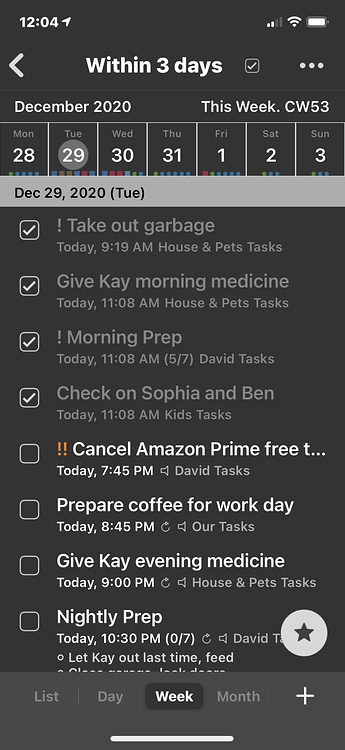

By utilizing an inbox to organize your to-dos, it gives you a degree of control over your schedule that helps actually get things done more efficiently-not just hastily check them off a list. There’s a logical priority placed on the tasks due during the current week, but you don’t need to use Todoist as a conventional task manager to take advantage of its greatness. Todoist easily lets you assign, prioritize and set reminders as you add and organize your tasks. Like most task managers, you’ll get a list of what needs immediate attention each time you launch, but what makes Todoist great-and gives it an edge over its competitors-is the ease with which it handles all of your projects and appointments, no matter when they’re occurring. Todoist breaks down your to-dos in a logical way that helps you prioritize. There’s a minimal feel to it for sure, but none of its design decisions get in the way of your ability to quickly set, schedule, and finish tasks. Whether you’re a list maker, project manager, or obsessive scheduler, Todoist’s deceptively powerful interface has you more than covered. From its minimal interface to its supremely functional task management, Todoist is such a pleasure to use you might find yourself looking for extra excuses to use it.

Where other some other apps feel either rushed or unintuitive, Todoist consistently gets things right.

So day-to-day I work off of my Today list and then head over to my Flagged list to work on "extras".Life outside the App Store has served it well. I have a Tickler list at the bottom to put anything with a date (or location) that I physically cannot do until that date arrives (or I'm at the location). As far as due dates are concerned, I only put dates on things that are really due. When I flag a task from those lists, it's the same as moving it to Next in Things. The tasks that live in those I consider Someday. All my lists are essentially "areas of focus" (like Personal, Family, Work, Home, etc). I have my lists setup just like Things, but this is how I do GTD in Reminders. Not to mention location alerts (I'm braindead so I use that a lot!) and remind me when messaging specific people. Not only that, the specific part of the message is linked to the attached icon. all of a sudden I had a reminder suggestion to pick up qtips. Last night I was texting my daughter who asked if I could pick up qtips from the store. Asking Siri to "remind me about this" whenever I'm looking at a website or email. Otherwise, I assume (like I have started to assume with Bear) that the app is at risk of being abandoned. All of these developers have been very transparent about what they plan to do, approximately when they plan to do it, and what just isn't possible. I recently started using Craft and the developers are much better at giving timelines for the release of new features and actually releasing the features people ask for. It's always "in the works." But when "in the works" turns into 6 months or more (i.e., the table feature in Bear), I just have to look elsewhere. Both developers refuse to provide any sort of timeline for new features. CulturedCode is doing the same thing ShinyFrog is doing with their app Bear (an app that I love but have possibly started to move away from).

While it's certainly the prerogative of developers to not discuss timelines and be very slow at releasing new features, as a user it's something that is just really starting to turn me off.


 0 kommentar(er)
0 kommentar(er)
